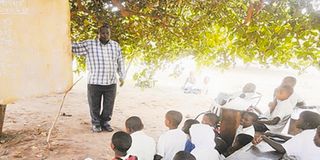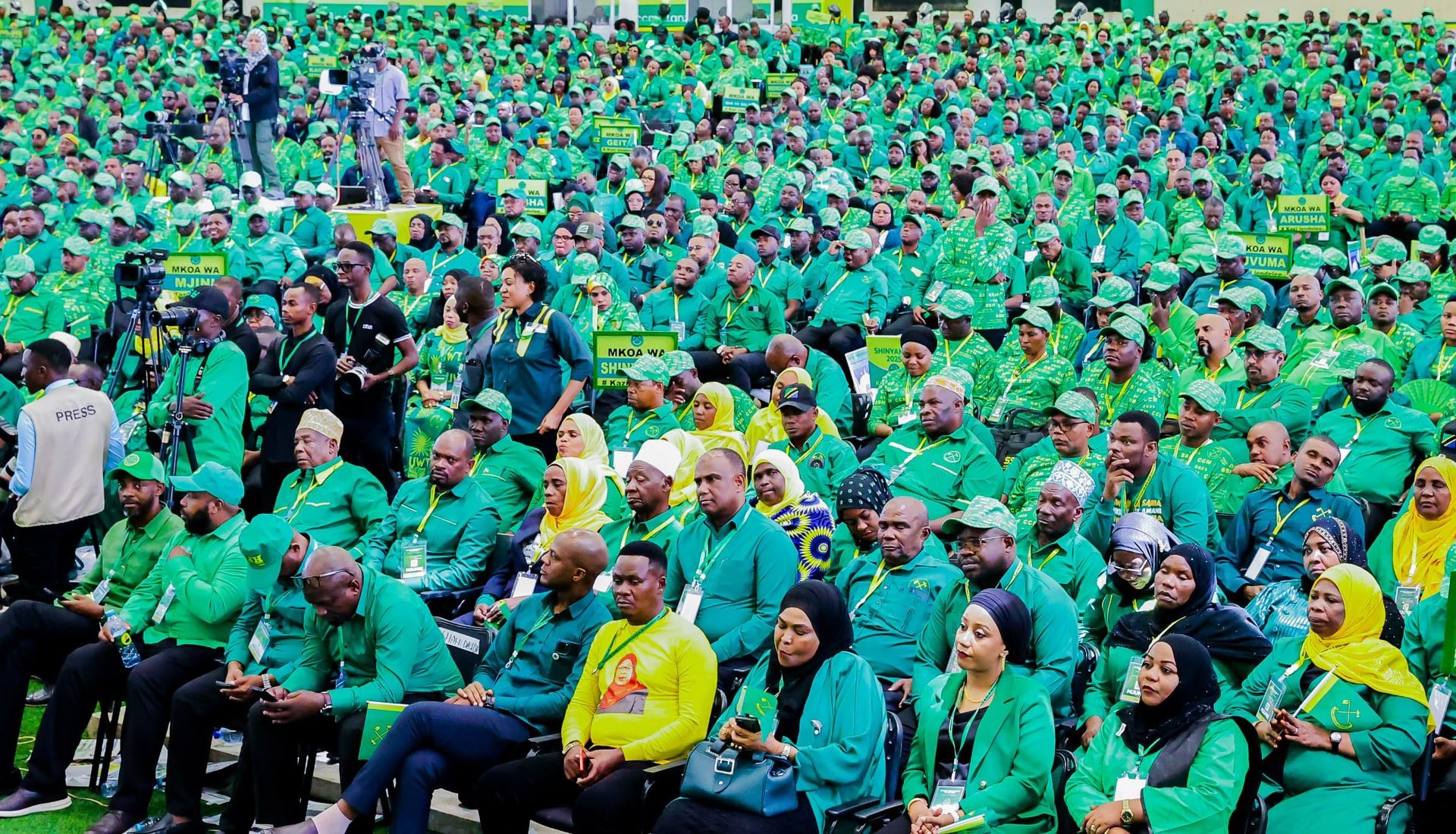A classroom under the shade of trees

Pupils at Nanyati Primary School in Mkunwa Ward, Mtwara Rural District, listen to their teacher, Shahibu Hoja, who is also the head teacher . The shade of a cashew tree serves as a classroom. PHOTO | HAIKA KIMARO
What you need to know:
Not so in Nanyati in Mtwara, where the scenario is real and not a laughing matter. It is an option dictated by a fairly widespread country-wide problem – shortage of decent classrooms.
Mtwara. Converting the shade of a coconut tree may seem and sound a novel idea for a theatrical play intended to entertain viewers.
Not so in Nanyati in Mtwara, where the scenario is real and not a laughing matter. It is an option dictated by a fairly widespread country-wide problem – shortage of decent classrooms.
It is a situation over which education sector authorities from the grassroots level to the sector ministry, and certainly higher up to Ikulu, will scratch their heads fiercely to at best ease, and at worst, solve definitively.
It’s a huge challenge, for many pupils are eager to acquire an education in order to fit neatly into the job market as young adults, resourceful self-reliant livelihood seekers, as well as become reasonable players in a largely scientific and technologically dynamic world.
But while the schooling environment is at best unfriendly, and at worst downright hostile, they have little or no option but persevere to overcome the challenges and make the best out of it.
Now, though, unlike in the past, they, their parents, guardians and stakeholders at large, are counting on realizing their dreams, courtesy of the dynamism of the President Magufuli-driven government to enhance social and economic sectors.
The Sh 18.77 billion the then CCM presidential candidate John Magufuli pledged during the election season, for monthly disbursements as part of the free education scheme, is a significant hint.
The anticipated increased primary school enrolment and attendant shortage of classroom space must be addressed earnestly.
Some 210 pupils at Nyanyati primary school which was established three years ago, are studying under tree branches, and desks are very few. The school has only one classroom.
The school which has only two government employed teachers and a volunteer also faces shortage of teaching materials.
The situation has made it almost impossible for the teachers to serve the pupils satisfactorily, according to head teacher Shaibu Hoja.
He says there are no houses for teachers, staff rooms and sufficient desks. Only 26 are available, against the required 88.
Mr Hoja says his pupils faced immense difficulties, especially during the rainy season, when they sprint to their homes for shelter, thereby disrupting lessons, sometimes up to three days on a stretch. “The challenge of not having sufficient classrooms is serious one because students are sometimes troubled by rain, and scorching sunshine, which often induces headaches,” he said.
The new Education and Vocational Training minister, Dr Joyce Ndalichako, has admitted that the quality education cannot be obtained under such poor infrastructure.
She said she was aware that the Regional Administration and Local Government (RALG) which is responsible for education infrastructure in primary schools has already issued a directive to all municipal councils to ensure that schools have the required infrastructure to facilitate smooth learning.
Pupils at the school pleaded with the government to come to their rescue. They say the frequently misses studies, especially during rains and teacher not reporting for work consistently.
“We need play grounds, classrooms, desks...most of the pupils sit on sands, we study under a cashewnut tree, our hand writing is not good and rain harasses us. We go home and we miss classes; when a teacher falls sick, we close school and don’t get studies, we are not feeling good,” said Asha Selemani, a Standard Three pupi.
What resident of the village need is the support of the government to improve the school’s infrastructure. They have managed to construct one classroom. “We request authorities to construct toilets for the children because we have a temporary one which is not hygienically safe. We also need more teachers because the school is serving children from neighbouring villages,” Issa Chonga, a resident of the village, said.
School committee chairman Fidea Chiponde said the school needed to urgently recruit more teachers, construct five classrooms, four pit latrines as well as seven residential houses for teachers.
The school hadn’t received any support from the government except Sh3 million from the council, which was spent on the construction of an uncompleted classroom from material support given by Mtwara Rural MP Hawa Ghasia, who contributed 100 iron sheets.
Mtwara council acting director Tamimu Kambona said they were aware of conditions at the school, saying classroom construction stopped because previously, the focus was constructing a laboratory to beat the deadline set by former President Jakaya Kikwete.




